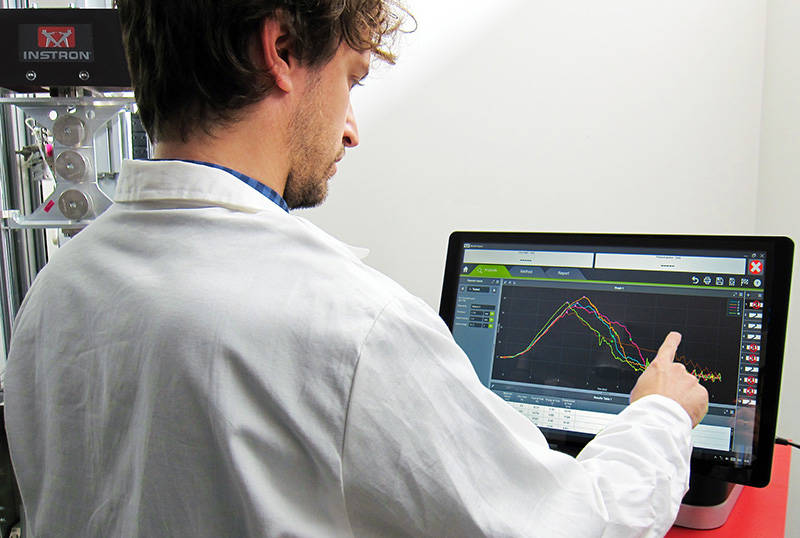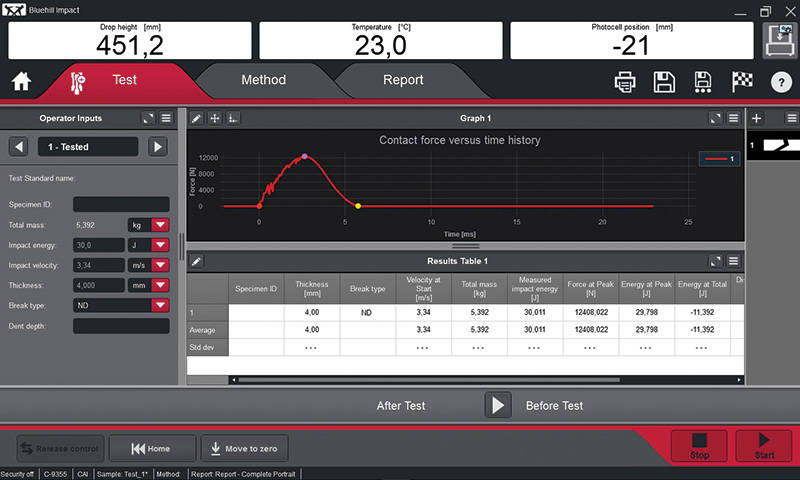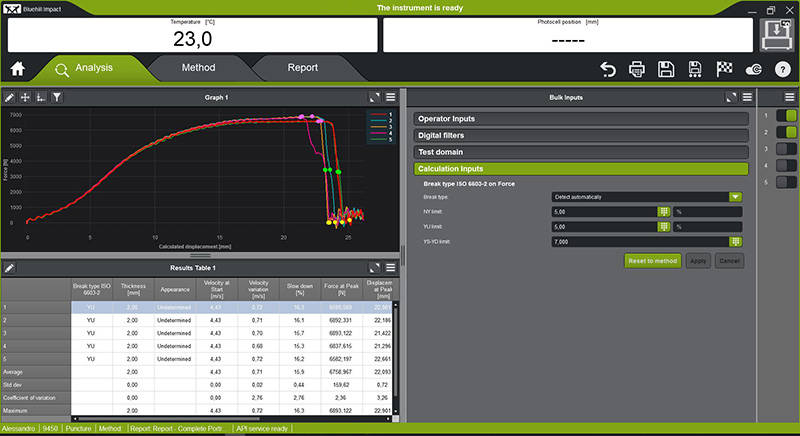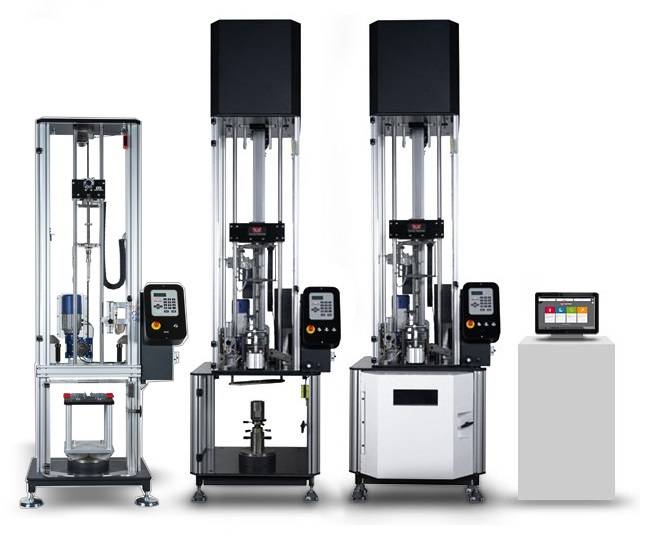Here we look at how the latest drop weight impact testing machine technology can help. Repeatable drop weight impact test calculations can help you identify potential issues early in the design and manufacturing process. This way, OEMs can prevent downtime and product recalls further down the supply chain.
Choosing your Drop Weight Impact Testing Machine: Homemade vs Off-the-Shelf
The type of drop weight impact machine used can affect the accuracy of your calculations. There are two main categories of drop towers: homemade and off-the-shelf solutions.
Homemade equipment is still the preferred choice for many OEMs, particularly in the automotive industry. This solution is generally suitable for basic drop weight impact test calculations. However, more complex testing requires a data acquisition chain, including a load cell, a force sensor, and a user interface. Integrating these components into a homemade solution can be challenging and time-consuming. Another downside of bespoke machines is that you have to export the data gathered during testing to an external device for analysis.
Instron’s off-the-shelf drop weight impact testing solutions come with a complete data acquisition chain, including load cell, force sensor, and an intuitive software interface that makes data acquisition simpler. You can process a larger volume of data faster and visualize it via a touch screen without exporting it.

Optimizing Basic Drop Weight Impact Test Calculations
Drop weight impact testing machines can perform a variety of impact tests, including puncture resistance, CAI test (Compression After Impact), tensile impact, 3-point bending, and wedge peel. Each test involves a range of calculations that can be more or less complex.
Even the most “basic” calculations can provide very different outcomes depending on the type of machine used. Manual calculations, using homemade solutions, can only provide a limited amount of data and can be time-consuming. They can also lead to inaccurate results due to human errors.
By contrast, off-the-shelf solutions such as Instron’s drop weight technology make these basic calculations faster and more accurate. Instron's drop weight impact software combined with an instrumented tup automatically gathers a variety of data points along the impact curve. This way, you can automatically calculate absorbed energy, speed, and other values associated with each data point.

Puncture Test Method: Accurate Break Type Calculations
Some impact tests like the puncture test method (specified by the ASTM D3763 / ISO 6603 standards) require more sophisticated calculations. This multiaxial impact test evaluates a material's puncture energy by hitting a specimen perpendicularly with a striker. Depending on the material and test procedure, the sample will display different rupture characteristics known as “break types”. These include penetration, initial cracks, breaks, and failure breaks.
Break types are not always immediately identifiable and may be interpreted differently by different operators, leading to inaccurate test results. Evaluating different break types manually can also be a lengthy process that can cause unnecessary downtime. This is where the latest drop weight impact software can help.
Instron’s advanced software virtually eliminates human errors and reduces downtime. The software automatically gathers data from an instrumented tup, matching a sample’s damage characteristics to the correct break type according to ASTM D3763 / ISO 6603. The impact curve and test calculations are immediately displayed after each test via a user-friendly interface. This way, test accuracy, and repeatability are optimized while speeding up time to market by reducing operator interactions.

Accelerometer Integration
The use of accelerometers during drop weight impact testing is commonplace in industries like automotive. Instron's drop weight impact testers can be equipped with accelerometers to meet the requirements of OEMs in the automotive sector. These devices, combined with the software’s CFC filters, enable you to perform accurate calculations and gather valuable data under different test scenarios.
Choose the Latest Drop Weight Impact Testing Machine Technology
Drop weight impact test calculations are key to determining the performance and quality of polymers and composites used across automotive and aerospace applications. A semi-automatic drop weight impact solution featuring an advanced data acquisition system can make these calculations simpler, faster, and more accurate. The latest technology enables OEMs to automatically gather larger amounts of valuable data, leading to more accurate and repeatable testing. This way, OEMs can validate the performance of materials and parts faster and more reliably, reducing their time to market and preventing issues further down the supply chain.

To discover Instron’s comprehensive range of drop weight impact testing machine solutions visit https://www.instron.com/en/products/testing-systems/impact-systems/drop-weight-impact-testing-machine